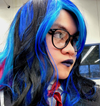
“At least it's portable!” Whether genuine or sarcastically snide, that's the saying often used when a port of a current gen game comes to the Nintendo Switch. Squeezing a game made for powerful hardware onto a tablet often means sacrificing visuals and performance. For me, as long as the game is still consistently functional, I'm willing to put up with its blemishes because of the convenience and playability that comes with the portable format. That basically sums up my thoughts on Split Fiction on the Switch 2. It for sure is a game that runs.
Still, even though I was consistently reminded how I was playing this current gen game on weaker hardware, this still a functional version of one of this year's best in the palm of your hands. A title our very own Cassie Peterson & Richard Allen awarded with a perfect score.
Split Fiction stars two aspiring authors meeting with a company for a publishing deal. What should have been a normal negotiation turned out to be anything but. The two of them get trapped in a machine the company designed to harvest and steal their story ideas as their own. Mio and Zoe must find a way to escape their fictional worlds and find a way to stop their stories from being stolen. It’s a novel concept that feels especially relevant today with the rise of generative AI.
While the story definitely has strong intentions and themes, with strong moments later on, the narrative overall handles its conflicts in a surface level, cartoonish manner. This applies to character writing especially. Zoe and Mio’s interactions evoke the rapid-fire quippiness of MCU dialogue. I didn’t mind it personally. It was cheesy and a bit shlocky, but just the right amount of a shlock that I found endlessly endearing. It’s a breezy tale that proudly wears its heart on its sleeve; one that I found myself getting swept up in despite its lack of polish.
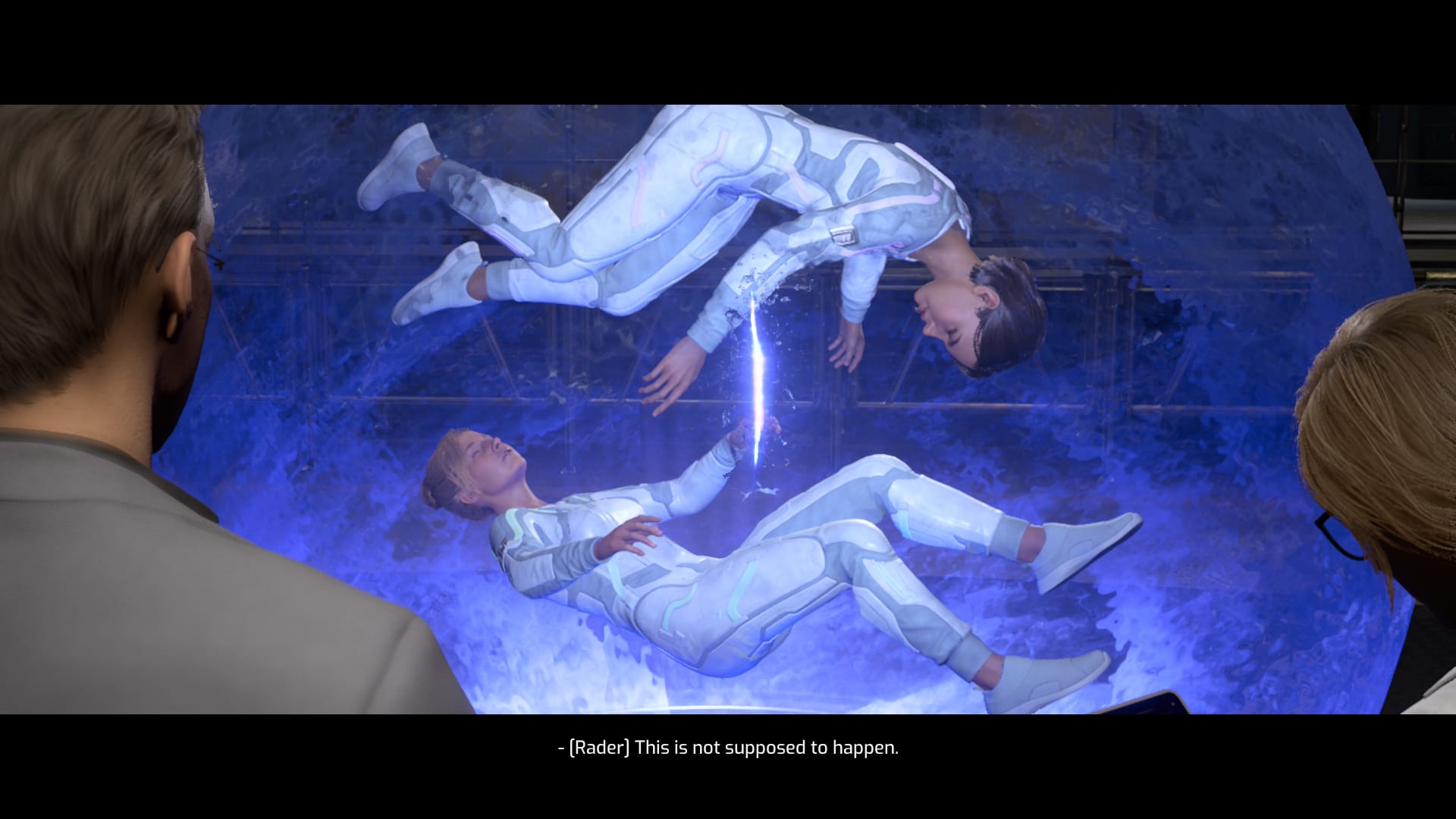
Story aside, the main draw of Split Fiction’s, well, split-fictional backdrop is how it shapes the gameplay scenarios you and a fellow buddy will be embarking through. Variety is prominent when traversing through the game’s different worlds. Even though the story interests of Mio and Zoe are confined to sci-fi and fantasy respectively, the game goes out of its way to explore the various different interpretations of these two broad genres.
For sci-fi, you could be exploring a world heavily inspired by Dune before eventually going on a motorcycle chase across a neon-lit, cyberpunk metropolis. On the fantasy side the two characters can sneaking around a generic fantasy village being attacked by trolls, and in another quest you could be playing as farting pigs trying to turn into sausages. And yes, all of this happens in the first hour of the game.

This momentum of creative ideas and gameplay scenarios holds strong through the game’s playtime. From 2D sidescroller segments to aerial fights as a dragon or jet. Floating around in space or walking around as a tooth in a world made of sweets. And of course how could I forget “returning to monkey”. This mixture of the familiar and the surreal in each gameplay scenario is what keeps Split Fiction going at a fresh, brisk pace even when these two characters' core movesets rarely deviate outside of standard 2D/3D platformer or vehicular controls.
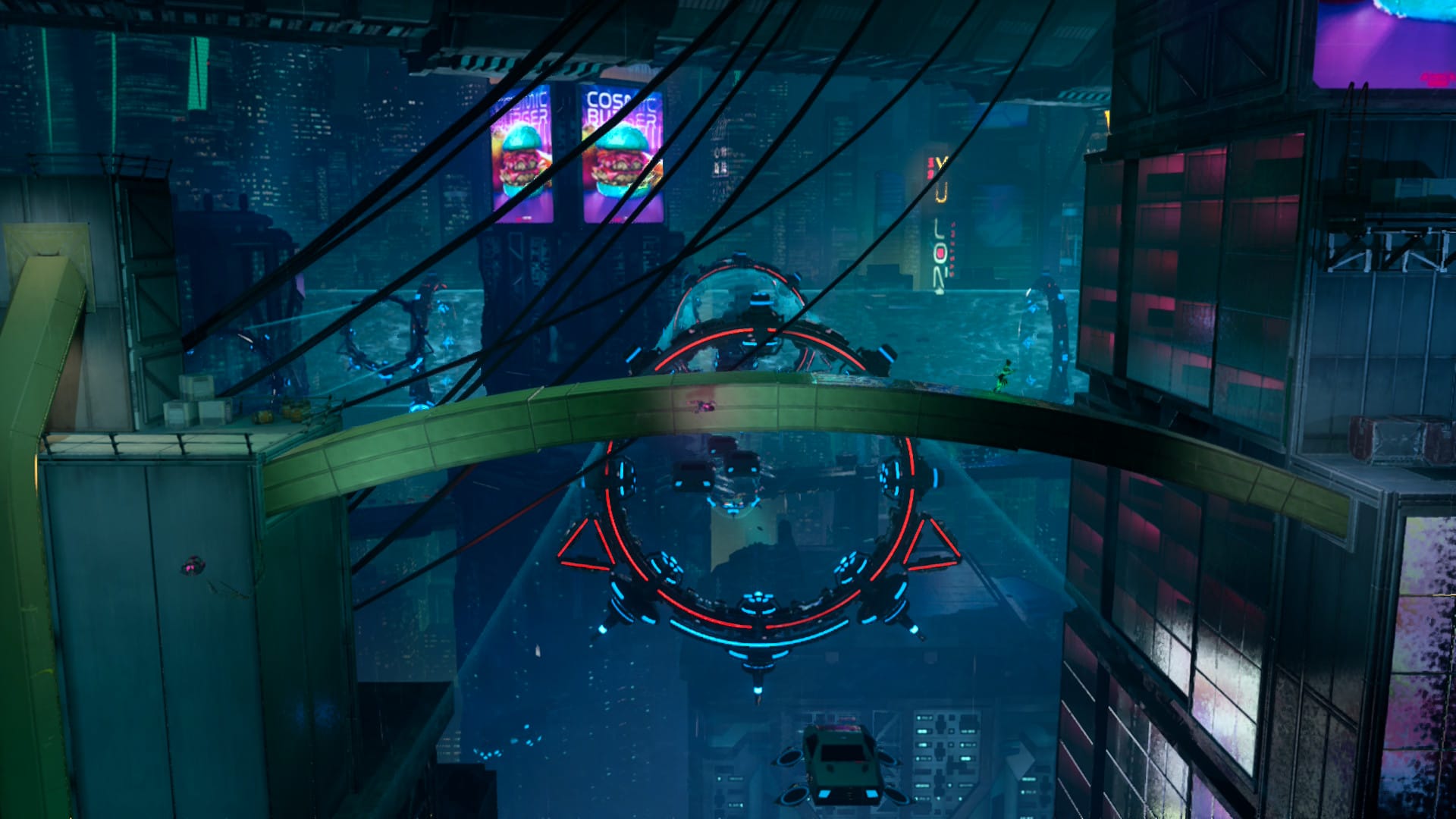
With that being said, Split Fiction’s inventiveness feels slightly hampered by the Switch 2 struggling to bring these worlds to life. There is quite a bit of texture pop-in when loading into a new area, and the visuals in general look less detailed than its current gen counterparts. Regardless, the art direction of the creative environments stays strong, even despite these compromises.
The primary technical issue is how the framerate lacks polish. For the most part, the game runs at a consistent 30fps. However, there’s occasionally a noticeable stutter every now and then. This is exemplified in more demanding sections. One segment in particular when swinging above a giant crowd had the framerate tremendously dip.

None of these issues bothered me personally, as I have a pretty high tolerance when it comes to mixed visual quality and framerate. But it is worth noting that these issues are present for those looking at this port with a more critical eye. As for me, these compromises were well worth it to play this game portably. I didn’t have access to a television or a monitor while playing this game for review, thus my entire time was spent in tabletop mode.
When compared to the original Switch, the bigger handheld screen of the Switch 2 allowed for more readability for a game that spent most of its time in split screen. Even if admittedly there were still some instances where we briefly puzzled over what to do next because the game required us to find a small object hidden on the tablet screen.
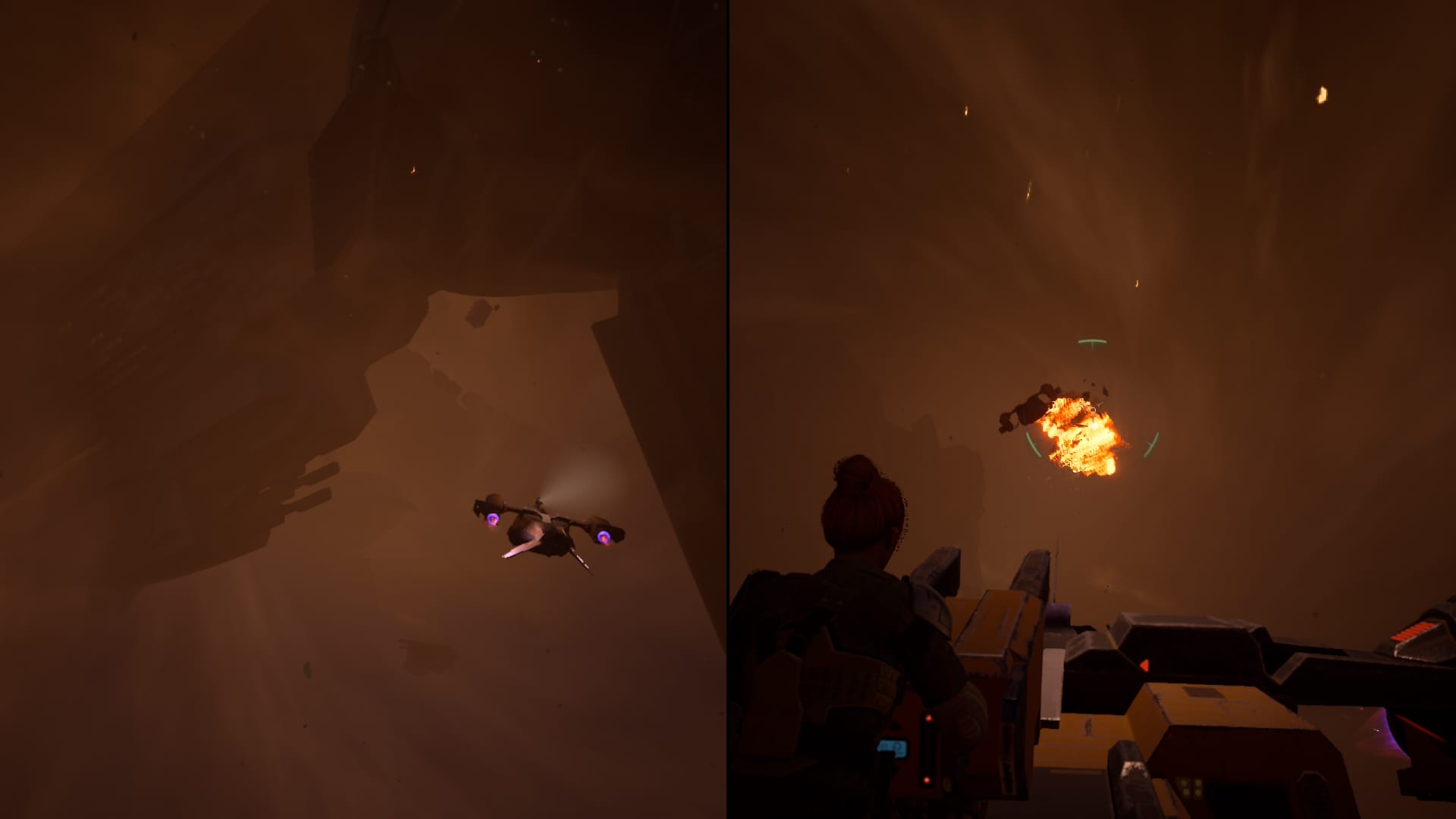
Unironically my favorite feature about playing Split Fiction on the Switch 2 is the kickstand. Obviously you can prop it up on a table or another flat surface for two people to crowd around it, and that works just fine. But the improved kickstand allows the system to be propped up at so many angles while keeping stability on a multitude of non flat surfaces. We tried a scrunched up pillow on a bed, a sofa decompressed from two people sitting on it, even the shakiest of legs when setting the system on my lap. Hazelight's games pride themselves on keeping local co-op alive, thus the convenience of being able to boot up the game at any time, anywhere thanks to the form factor of the Switch 2 reinforces that goal.
With that being said there is a disappointing, but justifiable caveat to the ease of local co-op. Despite a key focus of the Switch being the two Joy-Con serving as two controllers, this control method is not supported in Split Fiction. This is because the game utilizes too many buttons for one Joy-Con to handle; an understandable omission, but still a bummer how this co-op game does not utilize this local co-op feature. And that’s pretty much what it boils down to at the end of the day, this is still Split Fiction warts and all, but now it offers a variety of traditional and convenient ways of play.
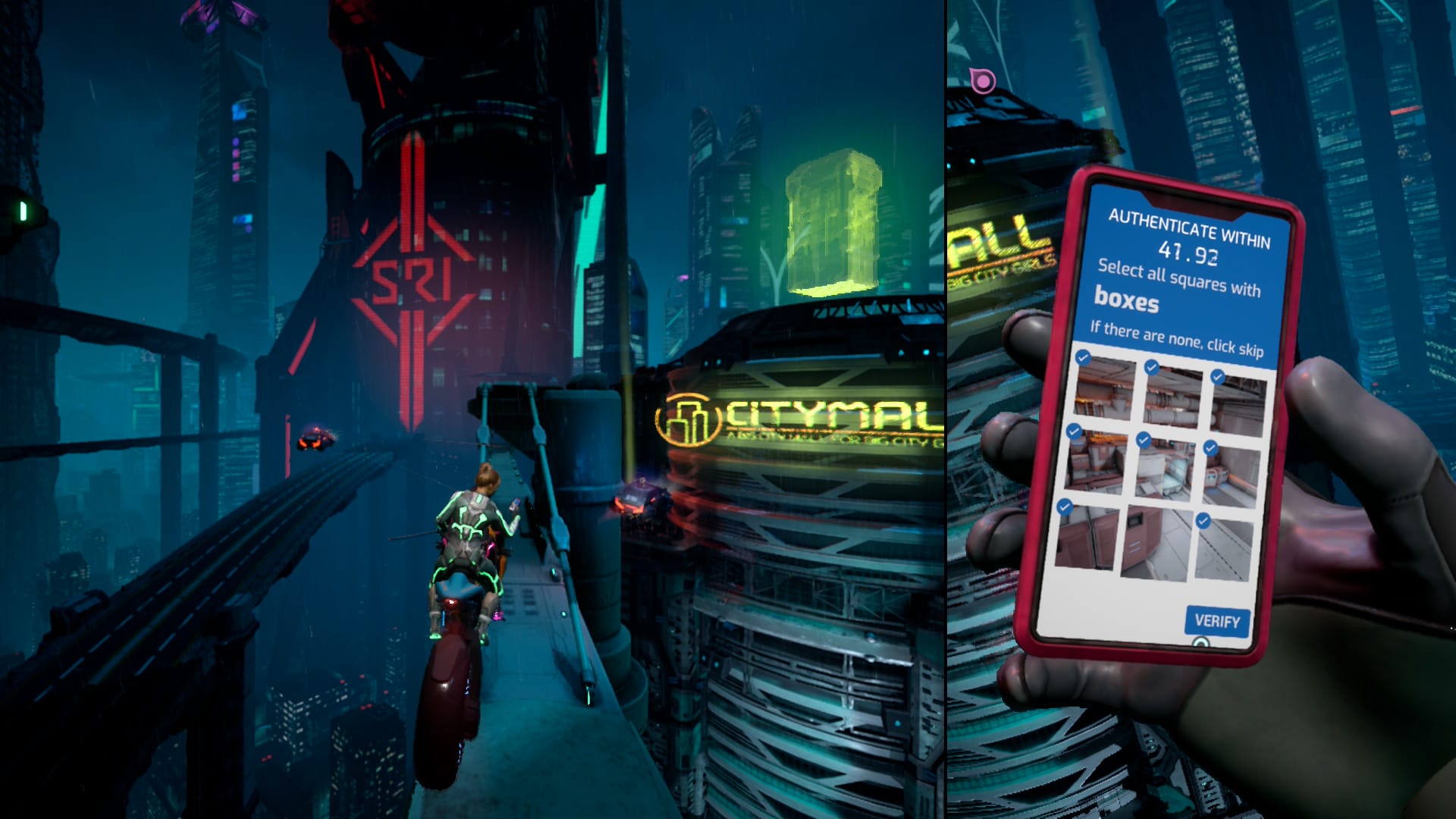
Local co-op isn't the only option to play Split Fiction with a friend. The game supports crossplay and a fantastic feature called a Friend’s Pass. Essentially someone who doesn't have the game can download this free application and use it to play with someone who does own the game, regardless of system. Based on my experience, I experienced no noticeable issues in terms of connectivity. Everything ran as it did during offline, local play. This includes being on a Game Chat session with someone at the same time. While the folks I played with and I favored using Discord during our sessions, Game Chat is still a suitable option.
Despite the smoothness of the online experience, the process to initiate crossplay is a hassle of outside websites and applications. To start, both players need to log into their EA accounts. Fair enough, that’s pretty standard for online games. Next involves both players being friends on their EA account in order for an invite to be sent. This step was the most cumbersome part of the process, as the person accepting the friend request needs to download the EA app (which bafflingly has no mobile option) in order to do so. None of these steps are particularly hard, they’re more tedious than anything, but the lack of explanation in the actual game for how this works made the entire process irritating.
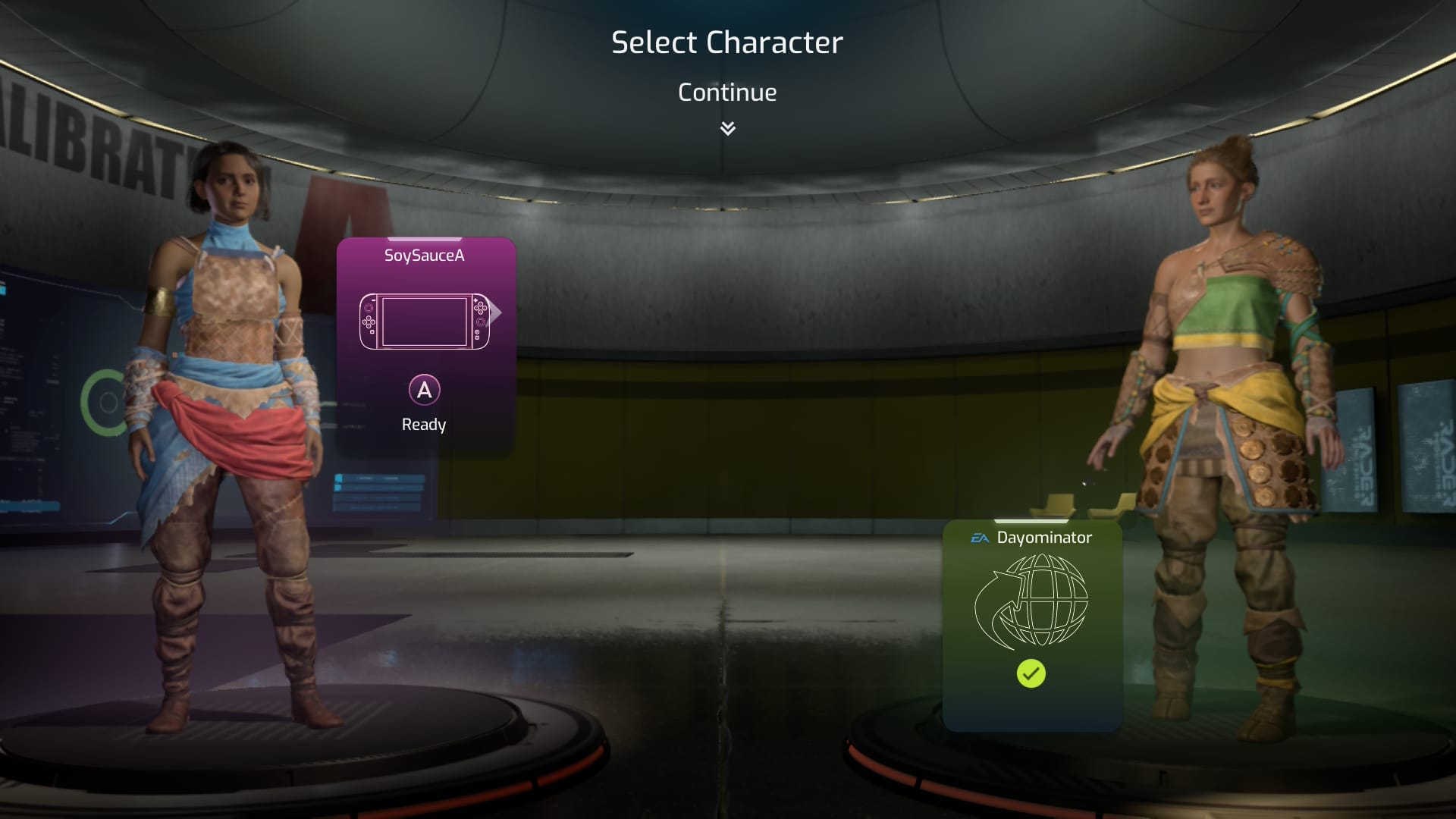
One aspect I was unfortunately not able to test was the Switch 2's Game Share function. This feature harkens back to the DS download play, and is another method Nintendo users can use to play Split Fiction with a buddy as long as one person has the game. What's cool in theory is how the original Switch is supported as well. The difference is that the game is being streamed onto Nintendo's previous system instead of running natively. Though once again, I haven't tested this feature to accurately say if the streaming runs well or not.
Split Fiction on Nintendo Switch 2
Great
Split Fiction on the Nintendo Switch 2 is a serviceable, albeit bumpy version of a nonstop thrill ride. Where it lacks polish in visuals and framerate, the form factor of Nintendo's latest console/handheld hybrid allows the ease and convenience of local co-op to shine. This may not be the best way to play Hazelight’s latest cooperative adventure, but the bells and whistles of the Switch 2 version makes it my favorite way to play the game, technical issues and all. Once again, as the saying goes: "At least it's portable!"
Pros
- Creative visual and gameplay scenarios
- Switch 2’s tabletop mode makes local co-op shine
- Entertaining story and characters
- Multiple free options to play with friends
Cons
- Visual issues are semi frequent
- Cumbersome crossplay set up
This review is based on a Nintendo Switch 2 copy provided by GamingTrend.
